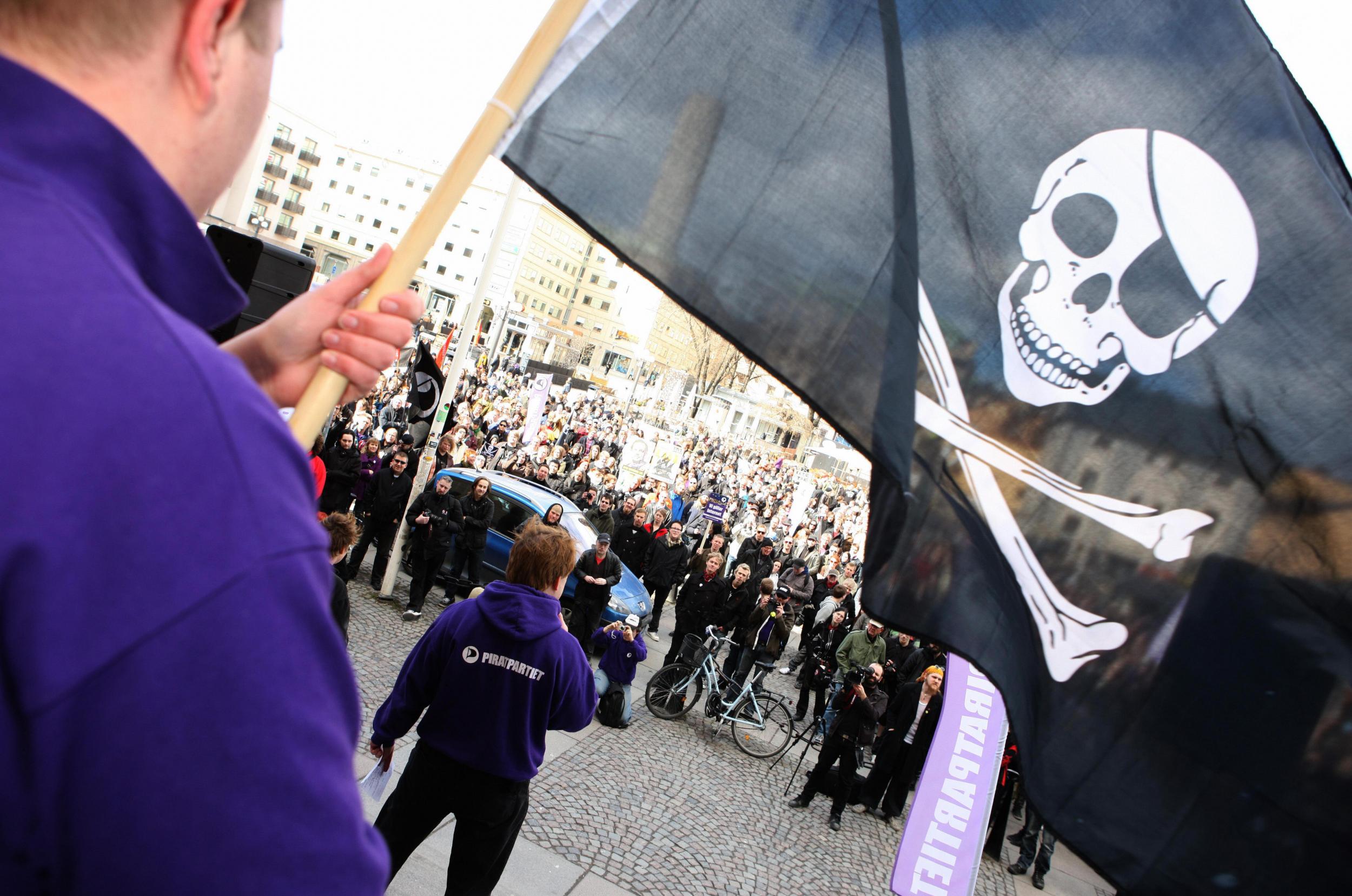You are a pirate and I am a pirate: 70% of young male Swedes download unlicensed video content

After it became known about the claim of copyright holders to Bredbandsbolaget, hundreds of Swedes took to the streets to take part in a protest action (Source: FREDRIK PERSSON / AFP / Getty Images)
The stronghold of digital piracy in Europe are the CIS countries . This is, first of all, Russia, Ukraine, Belarus and other states. We are not talking about the distribution of pirated media content, but about its consumption. Why in these countries, consumers of unlicensed content more than those who agree to pay for movies, music, software? One would think that the reason for the low level of income per capita. On the whole, according to this indicator, things are not so bad in the CIS, everything is not so bad , but worse than in most countries of Western Europe.
But research data on the level of piracy in Sweden, conducted by media analysis company, shows that the relationship between population incomes and the number of “pirates” is not so obvious. As it turned out, the citizens of one of the richest countries in Europe - Sweden - are actively downloading unlicensed content. According to a Mediavision report, 70% of young men can be called pirates here.
And this is despite the fact that in Sweden copyright holders, including Universal Music, Sony Music, Warner Music, Nordisk Film and the Swedish Film Industry, are actively fighting against piracy resources. For example, in 2014, these organizations filed a joint lawsuit against provider Bredbandsbolaget. They managed to achieve a favorable court ruling , in which the provider was obliged to block the international resource of The Pirate Bay and the Swedish streaming portal Swefilmer. In accordance with this ruling, the defendant will be forced to block Pirate Bay and Swefilmer for the next three years.
')
In addition, the Swedes have access to almost all international resources with licensed content, including Spotify and Netflix. But many citizens still prefer to receive movies, software and music on pirated resources. Network users in Sweden use as The Pirate Bay (access to it is not far from all providers), and other sites with illegal content.
According to Mediavision, in January of this year almost a quarter of Swedes in the age group from 15 to 74 downloaded and watched movies using pirated websites. As mentioned above, the most unlicensed content is most actively used by young people, mostly men. In the 15-24 age group, about 70% of Swedes download content from pirated sites.
Information provided by Mediavision can be trusted. It works from 2010, collecting and analyzing data on the activity of network users from Scandinavia. Specialists of this company say that over the past three years, the level of digital piracy in the country has remained the same, despite attempts by copyright holders to change the situation in their favor. Interestingly, the consumption of unlicensed content in Sweden is much higher than in neighboring Norway, Denmark and Finland.

“The ruling is not in favor of Bredbandsbolaget, a significant event,” says Natalia Borelius, a spokesman for Mediavision. She believes that the measures taken are not effective enough, since the state is not very actively engaged in the fight against pirates. In Finland and Denmark, where pirated sites have been blocked for the past few years, the level of piracy is half as high as in Sweden. It is possible that right owners, armed with data from Mediavision, can now gradually change the situation in Sweden in their favor, forcing providers to block pirated resources at the national level.
On the other hand, there are a lot of sites where you can get unlicensed content. And even if we block at the state level any large pirate resource, this will not fundamentally change the situation.
Moreover, the results of a number of studies show that the blocking of pirated resources causes the emergence of a greater number of new sites of this type. Some blocked resources with unlicensed content are moving to other domains , while unblocked sites receive more and more traffic. In some cases, an increase in attendance is observed even on blocked resources that have not moved to a new domain. This happens when closing access to such sites at the national level.
When a pirated site switches to a new domain, the number of user requests related to the blocked site in search services increases many times. This happened , for example, in the case of the Cineblog01.net resource, which a couple of years ago moved to the .li domain zone. As a result, the search traffic of this site has grown by 1000%. “The blocking of the site by AGCOM led to an increase in the popularity of the resource, with an increase in attendance from 106,000 unique visitors from Italian search services in 2014 to 2,294,000 users a year later,” say experts who studied the situation with this site.
As for Sweden, right holders are likely to begin seeking to block a large number of pirated resources at the national level. What it will lead to can be found only after some time.
Source: https://habr.com/ru/post/357270/
All Articles